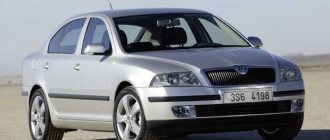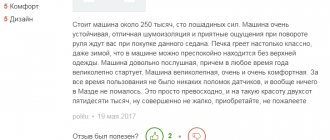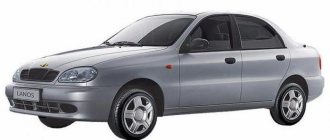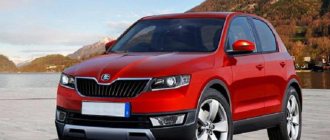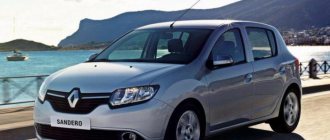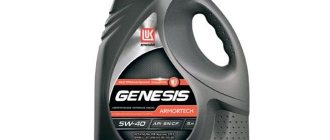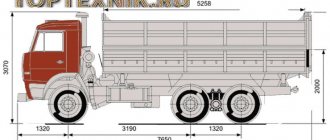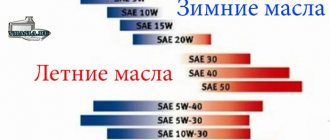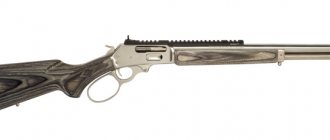The Renault-Nissan H4M-HR16DE engine is installed on Nissan models (Micra, Note, Juke, Tiida, Qashqai, Sentra), Renault (Logan, Sandero, Kaptur, Arkana, Duster, Fluence, Megane), as well as LADA (Vesta and XRAY) . Experts from the magazine “Behind the Wheel” named the 5 main problems of this popular engine.
Characteristics
The H4M engine is a modified K4M powertrain. This was an evolutionary solution to a not entirely reliable and power-hungry power unit. Renault designers were given the task of making an unpretentious engine that is ideal for any region of use, and can also be installed on cars of different classes and purposes.
Unlike its predecessor, the gas distribution system uses a chain instead of a belt, but a significant drawback is the absence of hydraulic compensators. It is because of this that every owner must adjust the valves every 80,000 km. A large adjustment interval is achieved thanks to the presence of pushers.
The camshafts have also undergone changes. Thanks to this, it became possible to install two injectors on each cylinder. This significantly reduced consumption and increased environmental standards.
H4M engine - characteristics:
| Description | Characteristic |
| Manufacturer | Yokohama Plant Dongfeng Motor Company AvtoVAZ |
| Marking | Engine h4m hr16de |
| Release | 2006-2017 |
| Configuration | L4 |
| Number of cylinders | 4 |
| Timing mechanism | 16-valve (4 valves per cylinder) |
| Engine capacity | 1.6 liters (1598 cm3) |
| Piston diameter | 78 mm |
| Power characteristics | from 108 to 117 hp |
| Econorm | Euro 4/5 |
| Average consumption | 6.4 liters per 100 km |
| Resource | 250 according to the manufacturer |
Design and resource
The four-cylinder naturally aspirated H4M has an aluminum block and cylinder head, two chain-driven camshafts, an electronic throttle valve, and a distributed injection system with two injectors per cylinder. The timing mechanism is equipped with a phase regulator at the inlet. The valves do not have hydraulic compensators, and therefore require periodic adjustment of the thermal gap (usually done after 80-100 thousand kilometers).
The engine is adapted for severe operating conditions (driving with frequent stops and long periods of idling), under which service intervals must be reduced (oil and filter changes every 7,500 km). Subject to compliance with maintenance regulations and timely repairs, the H4M engine is capable of traveling up to 400 thousand km.
Renault H4M engine with attachments
Service
Most motorists carry out maintenance of the Renault power unit with their own hands. The simple design and familiar design make it easy to do all the necessary repairs yourself.
The service interval is 15,000 km. To increase the resource and extend the life of the engine, it is recommended to reduce the period to 12,000 km. The volume of motor lubricant in the power unit is 4.3 liters, but usually a 4-liter canister is sufficient for replacement. The recommended H4M engine oil is marked from 0W-30 to 15W-40. Nissan 5W-40 engine fluid is filled at the factory.
The oil filter is used by Nissan and has catalog numbers - 152085758R and 15208-65F0A. Also, using the original articles, you can select a sufficient number of analogues.
Maintenance scheme:
- TO-0. It is carried out from 1500 to 2000 km. The standard factory oil is changed, and all filters are also changed.
- TO-1. This is done after 12-15 thousand kilometers. Comprehensive maintenance of the entire power unit. From replacing consumables and oil to full diagnostics of the engine condition.
- TO-2. Replacement of lubricant, oil and fuel filter elements. Scanning for ECU errors. Troubleshoot if necessary.
- TO-3. In addition to standard operations, brake system diagnostics are added.
Subsequent maintenance is carried out by analogy with TO1 - TO3. As practice shows, most motorists undergo maintenance at dealer stations only during the warranty period. After the warranty service expires, car enthusiasts begin the maintenance process on their own. This allows you to save up to 2/3 of the monetary equivalent of the cost of operations in a car service center.
Problems HR16DE (H4M)
Nissan HR16DE
reliable and durable. Let's list those few disadvantages:
- A whistle coming from the engine compartment, the source of the noise is the generator drive belt, tighten the belt or replace it with a new one along with the roller;
- The engine stalls. Perhaps the problem lies in the ignition unit relay; Nissan officially recalled a batch of cars for this reason. The problem is solved by replacing the ignition unit;
- Some owners complained about poor engine starting in cold weather (-20 C), but most likely this was a problem with the first series;
- In the region of 150 thousand km or more, problems with starting, failures in traction, uneven idling may occur - the reason lies in a stretched timing chain - this can be corrected by replacement;
- The antifreeze is running out, the cylinder head gasket and poor-quality surface treatment are to blame; leakage is also possible in the pump area;
- The disadvantage is such a simple procedure as replacing the spark plugs; to carry it out you will have to remove the intake manifold.
Malfunctions
The automaker claims that the engine did not show any particular shortcomings during testing, but car enthusiasts have their own opinion on this matter. Thus, design flaws were found that are inherent in all H4M engines. Troubleshooting is usually done by car enthusiasts on their own. Let's consider the main ones, as well as ways to eliminate them:
- Vibration. It can be heard quite clearly when starting the engine, as well as at idle speed. This means that the right motor mount needs to be replaced.
- Roar and evil sound. In this case, it is necessary to inspect the exhaust system. Often this sound begins to appear when the muffler rings burn out or there are breakdowns.
- The H4M engine stalls. The engine can stall for several reasons - faulty sensors, errors in the engine control unit, dirty throttle or an ignition problem. The initial sign of this problem may be periodic tripling.
- Whistle under the hood. Since there is no timing belt, the reason is the alternator belt, which has stretched and is slipping. Replacing the element will help solve the problem.
Main problems and malfunctions
- Generator belt whistling (the problem can be solved by tightening or replacing the belt);
- Sometimes the ignition unit relay fails (the unit is replaced as an assembly);
- A loud sound that appears when accelerating indicates a burnt-out muffler exhaust pipe gasket;
- Difficult engine starting in cold weather (temperatures below -15 degrees) can be avoided by replacing the spark plugs;
- If noise or knocking occurs in the engine, it is necessary to check and adjust the valve clearances.
Tuning
Refinement of the H4M engine is divided into two types: chip tuning and turbine installation. Firmware for power will help add 5-10% of the main power, but at the same time it will proportionally increase fuel consumption. This is worth considering when making a decision. Chip tuning can be done using a K-line cable, software and time. But, in most cases, it is recommended to contact a special car service, where specialists will select and configure the optimal configuration for the motor.
The second option is to install a turbine. The cheapest option is a VW turbine labeled K03. It comes with an intercooler and piping. In this case, it is necessary to remake (digest) the entire exhaust system and manifold. To save money, you don’t have to change the connecting rod and piston group, but you can’t inflate more than 0.5 bar. All this gives 150 hp, which is more than enough for urban and suburban use.
If you want to increase power to 180-200 hp, you will have to replace the camshaft and install lightweight pistons and valves. In this case, it will not be possible to do without installing a more powerful turbine and flashing the engine control unit with special software.
But don’t get too carried away with tuning and adding power. This can lead to the motor reducing its service life by 1/3. Therefore, it is recommended to contact professionals who will make calculations and select the optimal modification option.
Engine tuning Tiida/Beetle/Qashqai/Nout HR16DE-H4M
Chip tuning. Atmo
The most popular and popular way to increase power is sports firmware. Chip tuning HR16DE will not fundamentally change anything, the increase (if any) will be
5%, no matter how happy the owners are after calibration, it looks like nothing more than self-hypnosis. For a more significant increase, look for a 4-2-1 exhaust manifold and straight-through exhaust, on a 2-inch pipe, cold air intake and flashing. This will not give a big increase, but about 125 hp. It will be possible to remove it, in order to move on, you need to set the boost.
Turbine on HR16DE/HR16DET
There are projects with a small turbine on a standard piston one; this is the cheapest turbocharging option. A VW K03 turbine with an intercooler and piping is purchased, a manifold is welded for it, standard injectors, a direct-flow exhaust on a 2″ pipe, and all this needs to be configured. There is no point in blowing more than 0.5 bar into a standard ShPG, otherwise prepare money for repairs. The maximum that can be squeezed out from this configuration is about 160 hp. For further movement, you need to open the engine for a more powerful turbine, injectors with a capacity of 440cc, a powerful fuel pump and a piston with a puddle, under the coolant
8. Power, depending on the turbine, will be 200 hp or more.
Source
| The engine was installed | Nissan Note Nissan Tiida Nissan Qashqai Nissan Sentra Nissan Juke Lada X-Ray Renault Logan Renault Kaptur Nissan Micra Nissan Wingroad Nissan Cube> Nissan Bluebird Sylphy Nissan Latio Nissan Grand Livina Nissan Versa Nissan NV200 |
Technical specifications Renault H4M 1.6 liter
| Years of manufacture | 2006 – present |
| Place of production | Yokohama Plant (Japan) Dongfeng Motor Company (China) Aguascalientes Plant (Mexico) AvtoVAZ (Russia) |
| engine's type | petrol |
| Supercharging | No |
| Supply system | injector (MPI) |
| Cylinder configuration | R4 |
| Valves per cylinder | 4 |
| Timing type | DOHC |
| Timing drive | chain |
| Cylinder block | aluminum |
| Cylinder head | aluminum |
| Working volume | 1598 cm³ |
| Cylinder diameter | 78.0 |
| Piston stroke | 83.6 |
| Compression ratio | 10.7:1 |
| Cylinder operating order | 1-3-4-2 |
| Power | 110-119 hp |
| Torque | 142-158 Nm |
| Fuel type | gasoline AI-92/AI-95 |
| Environmental class | Euro 4/5 |
| Hydraulic compensators | No |
| Phase regulator | C-VTC (intake) |
| Catalyst | Yes |
| Lambda probe | Yes |
| EGR | Yes |
| What kind of oil to fill | 0W-20 5W-30 |
| Oil volume | 4.3 liters |
| Engine weight | 120 kg |
| Approximate resource | 300,000 km |
Verdict on HR16DE and H4M
The engine is reliable and proven, which is why it is installed on such bestsellers as: Qashqai, Duster, Tiida, Logan, Sondero, Kaptur, X-RAY, Juke, Note, etc. Someone might say that the engine is aluminum, and therefore disposable. It’s hard to disagree with this, but the mileage is 250 thousand km , or even 350 thousand km. This engine will easily overcome the need for a major overhaul.
The main thing is to change the oil every 10,000 kilometers, every 90 thousand km. listen to the sound made by the valves and if they need adjustment, then make it. To 150,000 - 200,000 thousand km. worry about replacing the timing chain and that's it.
H4M: advantages and disadvantages
As for the advantages, Russian regulars of Runet forums (and there used to be discussions in garages!) rated this unit as:
- Economical.
- With decent technical parameters;
- Quite a simple and affordable engine for both repair and tuning.
Regarding tuning, the most common additions, according to reviews, are “attaching” turbines and chip tuning, in other words, flashing various updates into on-board computer programs.
Of the disadvantages of the motor, our brother points out that:
- – in the first versions with a timing chain there were no compensators, which led to the fact that after 80 thousand mileage it was necessary to adjust the valves;
- – vibrations indicate the need to replace the engine mount on the right side;
- – burnouts of either the rings or the muffler itself often occur;
- – the generator belt periodically weakens due to stretching. This means it skips with the appearance of a characteristic whistle.
Characteristics of the HR16DE-Н4М motor
| Cylinder arrangement | in one row |
| Number of bars | 4 |
| Number of cylinders | 4 |
| Volume, l | 1,598 |
| Cylinder liner diameter, mm | 78,0 |
| Piston stroke in cylinder, mm | 83,6 |
| Compression ratio | 9.5 (10.7 for H4Mk 110 hp engine) |
| Number of valves per cylinder | 4 (2-inlet; 2-outlet) |
| timing belt | DOHC (with two camshafts, one for the intake valves, the other for the exhaust valves) |
| The cylinders operate in the following order | 1-3-4-2 |
| Nom. engine power/at engine speed | 83.5 kW - (114 hp)/6000 rpm |
| Max. torque | 153 N•m (at 4400 rpm) |
| Fuel system | with electronically controlled injection distribution |
| Number of fuel injectors | 2 for each cylinder |
| Runs on octane gasoline | 95 (92) |
| Environmental friendliness | euro 5 |
| Weight, kg | 105.4 |
| Years of manufacture | produced since 2006 |
| Recommended oil for lubrication system | ELF 5W30 5L (similar to SHELL 5W30 5L) |
| Engine oil volume, l | 4.3 |
| Oil change intervals | every 15,000 km, but at least once a year |
| Frequency of air filter replacement | after 45 thousand km. |
| Frequency of replacement of spark plugs (number 224012331R NGK PLZKAR6A-11) | after 30 thousand km. |
